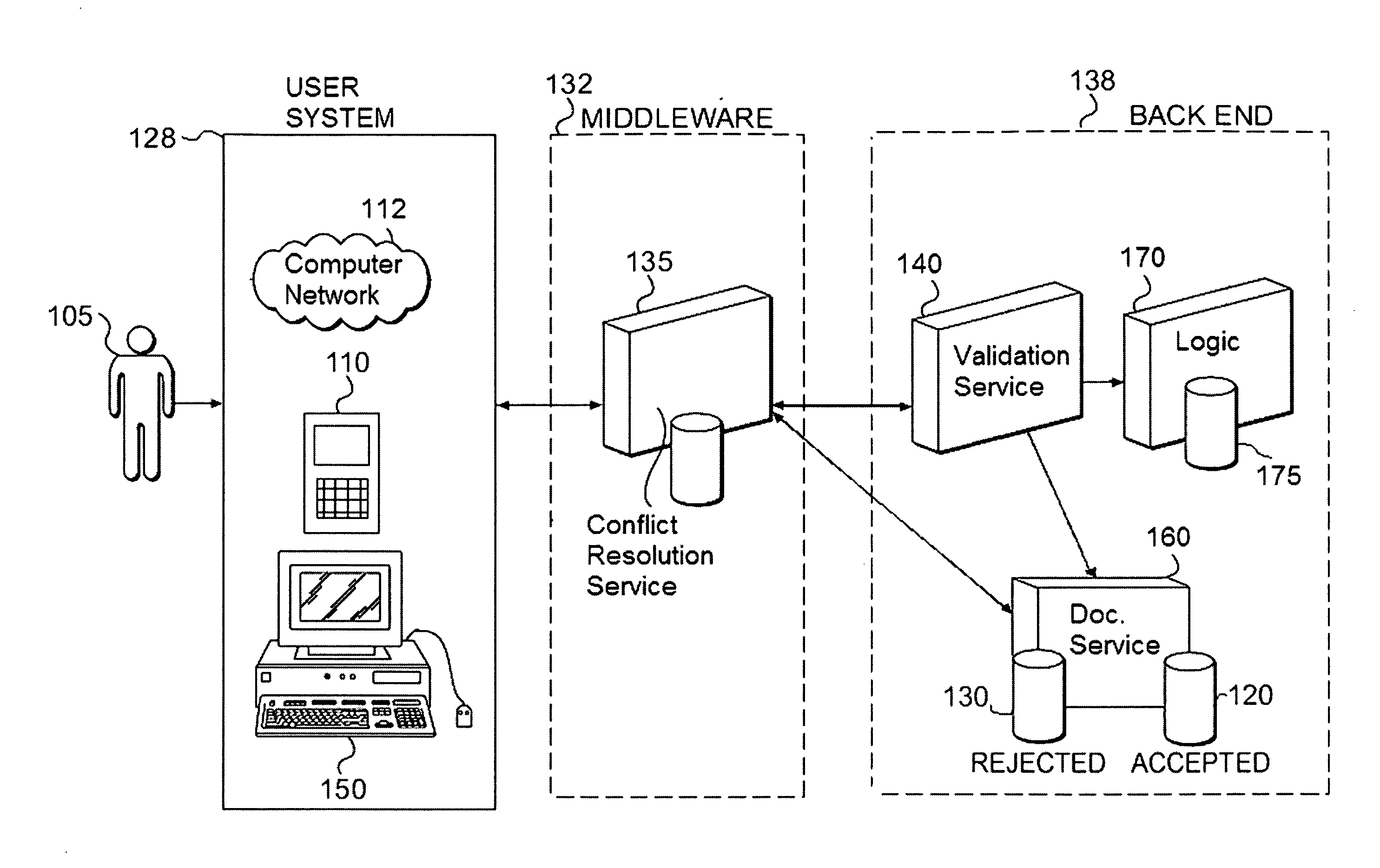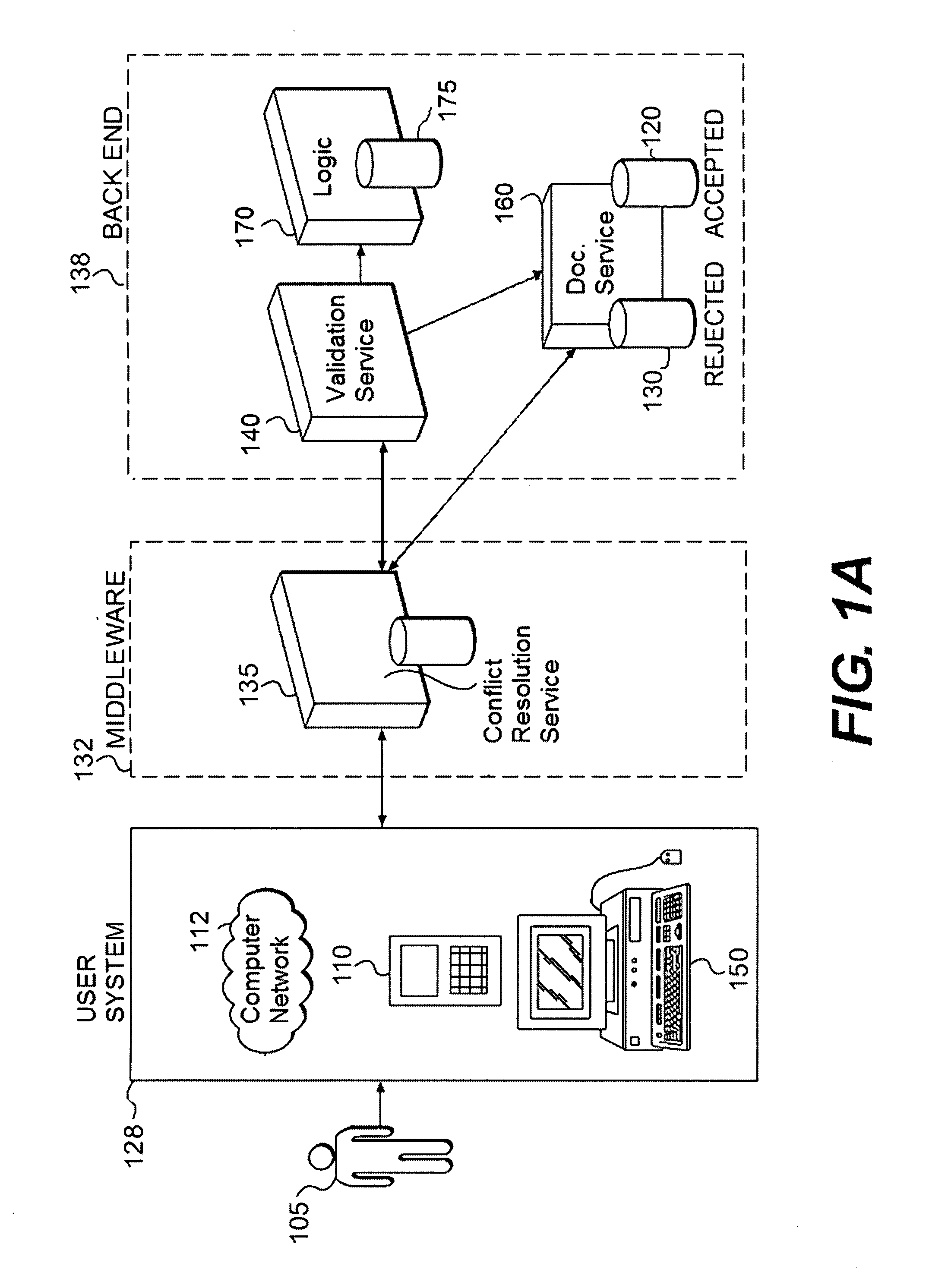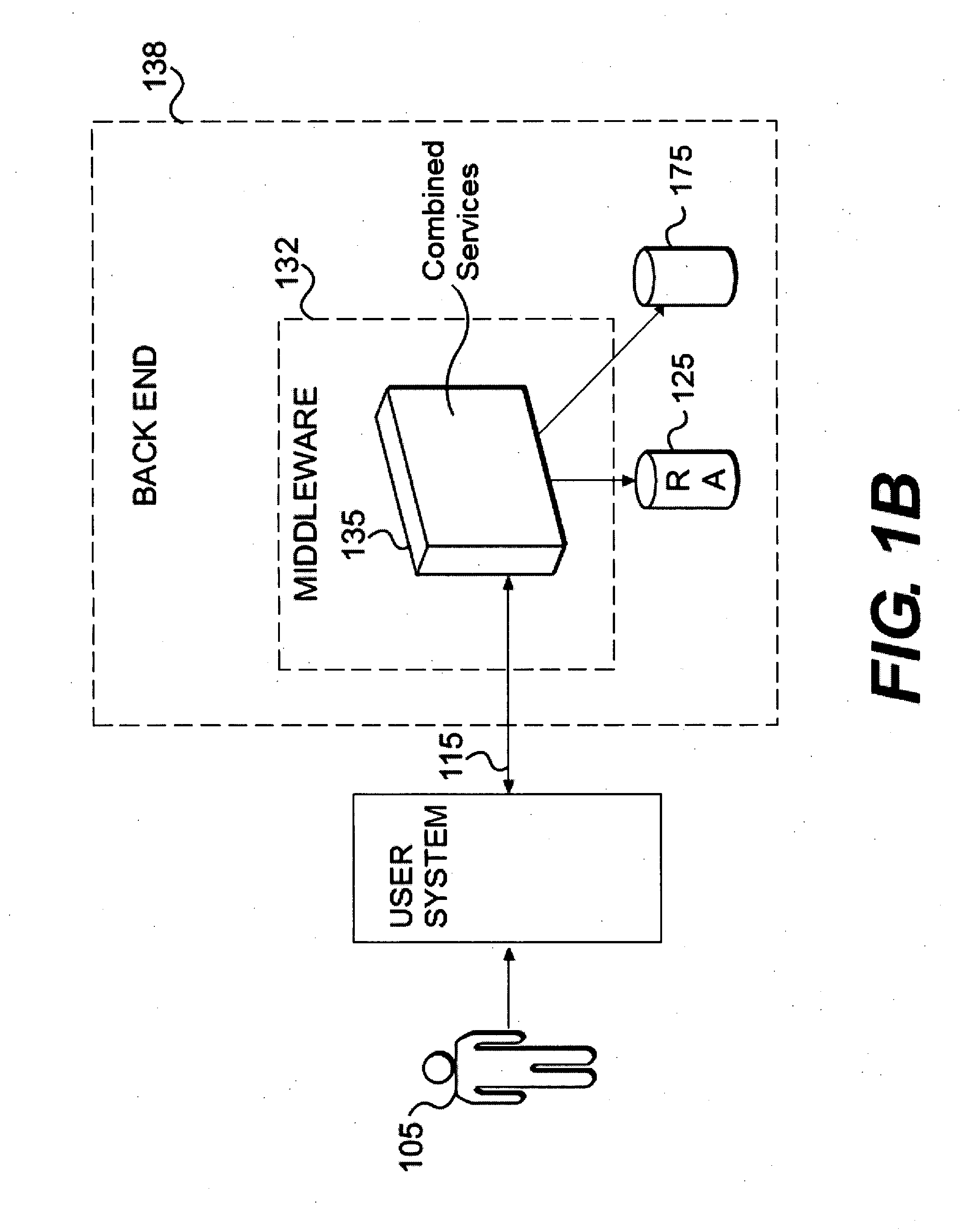Methods and systems for storing and retrieving rejected data
a technology of data storage and methods, applied in the field of data processing, can solve problems such as invalid data not being documented, errors and data conflicts can arise, and complex data processing and storag
- Summary
- Abstract
- Description
- Claims
- Application Information
AI Technical Summary
Benefits of technology
Problems solved by technology
Method used
Image
Examples
Embodiment Construction
[0022]Reference will now be made in detail to the exemplary embodiments, examples of which are illustrated in the accompanying drawings. Wherever possible, the same reference numbers will be used throughout the drawings to refer to the same or like parts.
[0023]Unless otherwise specified, a “data object,” for the purposes of this disclosure, is any data conforming to a particular format. Examples of data objects include an instance of a class of data, one or more records in a database, and / or at least one data value. The “backend” portion of a system is that part of the system responsible for business logic and data storage, and may or may not include the middleware portion of the system. A “data model” may be thought of as a blueprint that specifies the structure of data objects used by the backend or middleware. Therefore, the format of a useable data object may be dictated by the data model in one embodiment.
[0024]As already stated, a user system may be any device or satellite sys...
PUM
 Login to View More
Login to View More Abstract
Description
Claims
Application Information
 Login to View More
Login to View More - R&D
- Intellectual Property
- Life Sciences
- Materials
- Tech Scout
- Unparalleled Data Quality
- Higher Quality Content
- 60% Fewer Hallucinations
Browse by: Latest US Patents, China's latest patents, Technical Efficacy Thesaurus, Application Domain, Technology Topic, Popular Technical Reports.
© 2025 PatSnap. All rights reserved.Legal|Privacy policy|Modern Slavery Act Transparency Statement|Sitemap|About US| Contact US: help@patsnap.com



